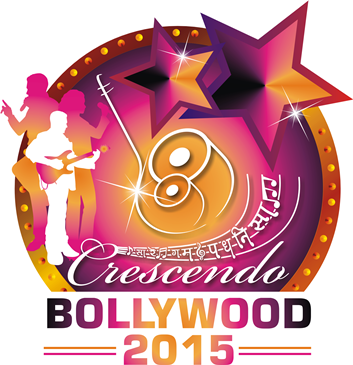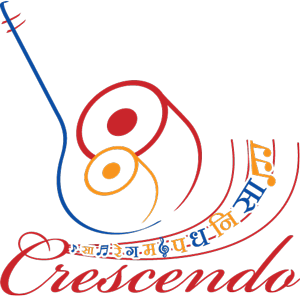| Vinayakrao R Patwardhan | ||
|---|---|---|
| Gharana | Khayal - Gwalior |  |
| Speciality | Vocal | |
| Guru |
Vishnu Digambar Paluskar Ramkrishnabua Vaze | |
| Born | Please login to view this information | |
| Died | Please login to view this information | |
| More information at : | Please login to view this information | |
| Short Bio : | Information submitted below has been put here only for educational purpose and has been submitted by community users and users of the site. SwarGanga has not verified any copyright and takes no responsibility whatsoever. If you feel that you own copyright to the material below, please let us know and we will with you on the same. Pandit Vinayakrao Patwardhan was one of the most prominent vocalists, Guru, singer-actor and music missionary in early decades of 20th century. He was born in Miraj (Maharashtra) in a middle class family of Dasagranthi Brahmins and was named as Vinayak as he was born on day of Ganesh Chaturthi. Vinayakrao's mother passed away in 1902 and he lost his father Narayanrao, as well a few months later. His paternal uncle took on the responsibility of bringing him up. One of the uncles, Gurudev Patwardhan, was a Pakhawaj player and Pakhawaj and Tabla at Gandharva Mahavidyalay at Lahore which was established by Pandit Vishnu Digambar Paluskar. This second uncle Keshavrao Patwardhan was a disciple of Gayanacharya Balakrishnabuwa Ichalkaranjikar and used to teach music at the Ganesh Sangeet Vidyalaya. Vinayakrao started learning music in this music school in 1905. Vinayakrao was fortune to get selected by Pandit Vishnu Digambar Paluskar as his disciple in 1907. Gangadharpant Patwardhan alias Balasaheb Mirajkar, king of Miraj offered him a stipend of 16 rupees a month for studying under Paluskar in Lahore. After one year, Panditji opened a branch of his music school in Mumbai, they got shifted and Vinayakrao received further training in Mumbai till 1914. With having rigorous training for 12 years under his Guru Pandit Vishnu Digambar, Vinayakrao completed Sangeet Pravesika course (four years) and Sangeet Praveen course (five years, 1919). This was not only music training, but was also a training that imparted values and ideologies to live an ethical life - with inputs for physical health, dress and good conduct, to culminate a student in developing as an all-rounder student's personality. During his study at Vidyalaya, apart from learning and teaching music to junior students, he was assigned to assist in the maintenance of the school building and the work of the press division, play the cashier's role; and also assist Sankarrao Vyas in the co-operative store. This experience helped him later in the discharge of administrative responsibilities. Though essentially a vocalist, Vinayakrao also learnt to play Harmonium, Tabla, Jalatarang, Sitar and Violin. He also acquired some familiarity with the basics of Kathak dance, making him a ‘complete musician’ in traditional Indian definition – a person well-versed in all three forms of music, i.e. vocal, instrumental and dance. After obtaining degree Sangeet Praveen in 1919, Vinayakrao went back to Miraj, where he got an opportunity to study under Gayanacharya Ichalkaranjikar (Guru of Vishnu Digambar Paluskar). In this advanced training, Vinayakrao polished the special Ragas like Malgunji, Malav, Gunji Kanada, Gandhari, Devagandhar, etc. & 150 Bandishes from of repertoire Gwalior gharana from the master and also notated them, which helped him in later publishing in the 7 volumes of “Raga Vigyan”. While he was in Miraj, Vinayakrao had the opportunity also to listen to the music of Ustad Rahmat Khan, the court singer in Kurundavad state and also got opportunity to accompany KhanSaheb on Tanpura where he picked up many nuances in his style of singing. He was particularly impressed by this maestro's style of rendering the Tarana and learnt several Taranas from him. Later he became one of the most able and applauded Tarana singers in country. Later in 1932, even after becoming a successful performer and after establishing his own music school in Pune, Vinayakrao’s urge to acquire more knowledge in music made him learning music under Ramakrishnabuwa Vaze as a Gandabandha (formal) disciple and got to learn many rare Ragas such as Samant Kalyan, MalatiBasant, Bhankar, Khat, Nand, Jayant Malhar, Barari, rare varieties of Todi and Nat, etc. Career on Marathi musical stage: Narayanrao Rajhans aka Bal Gandharva, the most celebrated musical-theatre personality in Maharashtra and a disciple of Pandit Bhaskarbua Bakhale was then on the lookout for a good singer-actor in his own drama company ‘Gandharva Natak Mandali’. He offered Vinaykrao to join him as his hero in the Mandali. Vinayakrao joined the Gandharva Natak Mandali in August 1922 and then after he was a popular singer-actor for 10 years until he left Gandharva Natak Mandali. He acted in many dramas such as 'Vidhilikhit', ‘AmritSidhhi’, ‘Asha Nirasha’, 'Kanhopatra' (Anandrao), 'Menaka' (Vishwamitra), 'Mrichchakatika' (Charudatta), 'Shakuntala' (Dushyanta), 'Samsayakallol' (Ashwin Sheth), 'Shapasambhrama', ‘Saubhadra' (roles – Narad, Arjun), 'Ekacha Pyala', 'Manapaman' (Dhairyadhar). He played role of Krishna in 3 plays - 'Swayamvar', 'Draupadi' and 'Nandakumar'. Later in 1940’s & 1950’s, he acted in few plays at special occasions such as Natya-Sammelan. Vinayakrao, along with acting, also composed music for songs in the plays he acted and that were his contribution in development of Marathi NatyaSangeet. In 1926, Paluskar advised Vinayakrao to bring out a book of Natyageet-s with notation in order to propagate this genre of music and Vinayakrao published ‘Natya Sangeet Prakash’ (1930) and Maharashtra Sangeet Prakash (1932). Vinayakrao was one of those who stayed away from the pleasures usually associated with the world of drama in those times. In fact, he would not even drink tea. As a Guru and propagator of music: After this training which made Vinayakrao as a mature artist, Vishnu Digambar Paluskar recruited him to serve the mission of propagating Hindustani music, along with others like Govindrao Desai, Baburao Gokhale, N. M. Khare, Vamanrao Padhye, Sankarrao Pathak, Omkarnath Thakur, Narayanrao Vyas, Sankarrao Vyas, Shankar Bodas, Vishnu Kashalkar, B R Deodhar, etc. These handpicked students, serving later as music missionaries, helped in the growth of connoisseurs (Kaansen) along with actual artists (Tansen). Vinayakrao Patwardhan excelled not only as a student but also as a teacher. After completing Pravesika course, was used to teach the junior students in Gandharva Mahavidyalaya. In 1921, he joined the branch of Gandharva Mahavidyalaya in Nagpur as a Principal where he worked till 19 for a year. During his career as an stage actor in Gandharva Natak Mandali, he trained Vishnu Ghag and Janardhan Marathe. Vishnu Digambar Paluskar died in August 1931 and this made Vinayakrao to left the Mandali to carry forward the mission of his Guru. Hereafter Vinayakrao concentrated more on concerts and music teaching. In May 1932, he established his own music school - Gandharva Mahavidyalala in Pune. The school, which followed the broad vision of Vishnu Digambar, had some important distinguishing features such as a proper syllabus oriented course with use of text books on music theory, writing music in notation and a system for examinations. In 1942, Patwardhan established Bharatiya Sangeet Prasarak Mandal and handed over the school. On 1 May 1952, he started teaching in another music school ‘Vishnu Digambar Sangeet Vidyalaya’. Both these institutions are still working in Pune. Vinayakrao established another institution ‘Vishnu Digambar Smarak Mandir’ in Miraj on 25 February 1966. There were hundreds of disciples of Vinayakrao Patwardhan – some of them became excellent performers, some excelled as Gurus and some became music administrators and also connoisseurs. This is a small list of his disciples – Pandit Dattatreya Vishnu Paluskar (son of Vishnu Digambar), V. R. Athavale, Vinaychandra Maudgalya, Vishnu Ghag, Janardhan Marathe, V. D. Ghate, Mukundrao Gokhale, Rambhau Chandurkar, Rajabhau Kogje, Sunanda Patnaik, Sakuntala Palasopkar, Leela Sardesai, Kamal Ketkar, Lila Limaye, Sita Mavinkurve, Indu Sohni, Lakshmanrao Kelkar, Madhukar Khadilkar (Sarangi player), Hrishikesh Bodas, S. B. Deshpande, his own sons Narayanrao, Madhusudan, daughter in law Sudha Patwardhan, etc. As an artist, concert performer, composer and musicologist: Vinayakrao's career started in 1913 when he sang at the wedding of the daughter of the Holkar-s of Indore. His first grand performance was in the Music conference held by Gandharva Mahavidyalaya in March 1918 and in this concert, he got encouragement and applause from stalwarts such as Ichalkaranjikar, Vazebua, Bakhlebua and Rahmat Khan! He presented a number of music concerts in Nagpur region when he was Principal there. He was regular concert performer even during his career as singer-actor in the Gandharva Natak Mandali. In March 1926, he performed two Bhajan-s for Mahatma Gandhi in Sabarmati. Vinayakrao's first programme broadcast by All India Radio was on 15 August 1927 and he continued as a celebrated vocalist on AIR for 52 years. He gave more than 1000 performances all over India. He also performed in Russia, Poland, Czechoslovakia in 1954 when he toured there as a member of cultural delegation snet by Govt of India. He was performed in Nepal in 1956. Vinayakrao's Khayal Gayaki was essentially Balkrishnabua Ichalkaranjikar and Vishnu Digambar Paluskar’s branch of pure Gwalior Gharana. He had a strong, rich voice and used to sing in pitch F. He was well-versed in other genres such as Dhrupad – Dhamar, Ashtapadi, Chaturang, Triwat, Tarana, etc. He followed the systematic unfolding of Raga with gradual movements such as Alap, Bol-Alap, Behlawa, Bol-Taan, Bol-Bant, Taan. Some of his pet Ragas were Adana, Bahar, Soor Malhar, Asaveri, Bagesree, Bhoop, Darbari, Desi, Hameer, Jaijaiwanti, and Todi along with some uncommon Ragas such as Anandi Kedar, Jayant Malhar, Malgunji and Ramdasi Malhar. He also presented many duet performances (Jugalbandi) with his Guru-bandhu Pandit Narayanrao Vyas and HMV published a record of this jugalbandi in Raga Gaudmalhar and Malgunji. His concerts were full of variety such as Khayal, Tarana, Ashtapadi, Tarana, Sankrit Raga Dhyaan, RagaMala, Hindi Bhajans and Natyageet. His virtuosity in Laya-taal reflected in elaborating Bol-Bant, Bol-Taan and Ladhant-Bhidant in Khayal, rendering Tihai-s in Bandishes. He was also known for high-speed Sargam and ‘Dir Dir’ while singing Tarana. Though his was fluent in Tappa, he rarely presented it in concerts. He totally discared Thumri-Dadra being a puritan. Patwardhan gave many 78 RPM records of Khayal, Natyageet and they were very popular amongst listeners. He also gave 6 educational records with description and demonstration of Ragas. Patwardhan composed many Lakshan-geets, Suravarta-s, Khayal Bandishes. He didn’t have flair of poetry and so he used the lyrics of saint-poets such as Soordas, Tulsidas, Nanak, Sahajobai, Kabir, etc. for composing Bandishes. Along with giving music to Marathi Natyageet-s, he also scored for a Hindi film ‘Madhuri’ in 1931. The publication of 7 volumes of ‘Raga Vigyan’ can be considered as a prominent musicological work by Patwardhan. In these volumes, he published notations traditional and newly composed Bandishes which is a great documentation after Pandit Bhatkhande. He also described the theory of each Raga in detail with comparative analysis. His books ‘Baal Sangeet’ and ‘Shaley Sangeet’ were aimed towards music teaching in school children. He received many honors and titles such as ‘Sangeet Choodamani’, ‘Mahamahopadhyay’ and awards such as Fellowship of the Sangeet Natak Akademi (1965) and Padma Bhushan (1972). He died on in Pune at the age of 77. |
|
| Disciple tree | Please login to view this information | |
| Bandishes composed by this artist : |
You might also like the following videos we randomly search for you from youtubePlease wait while we randomly search some videos |



